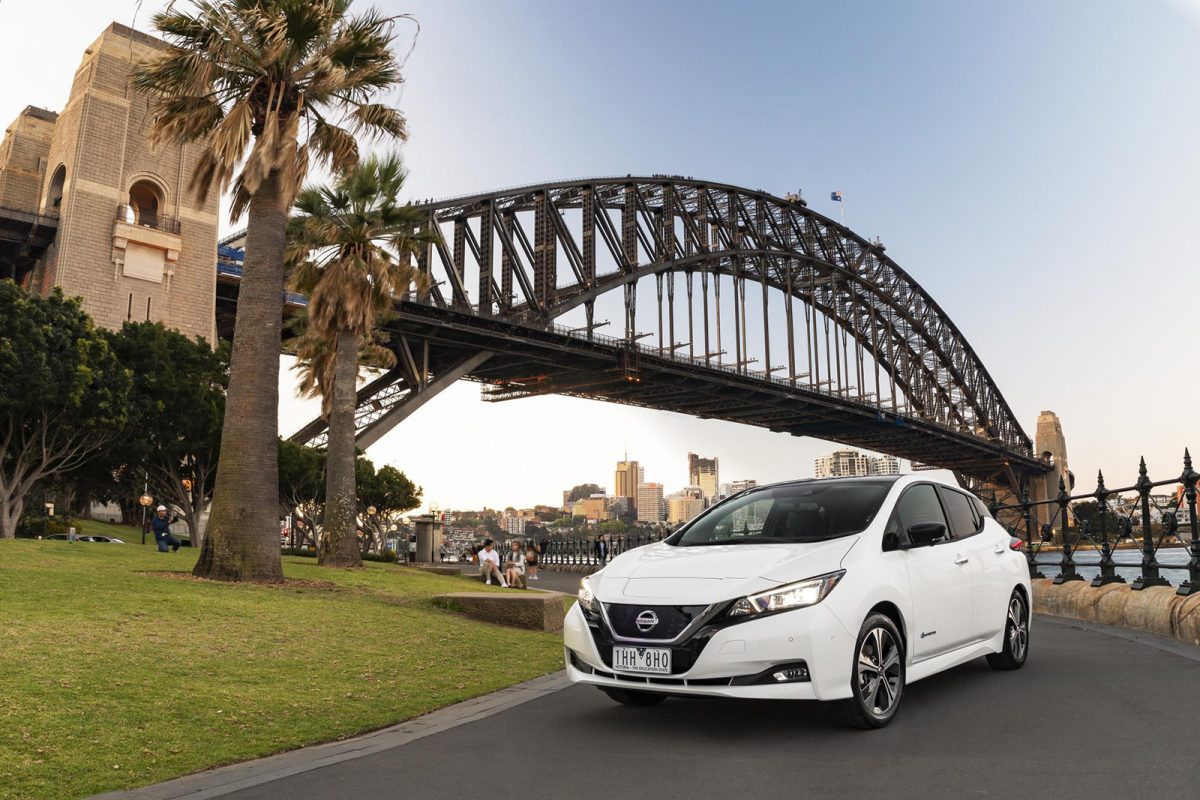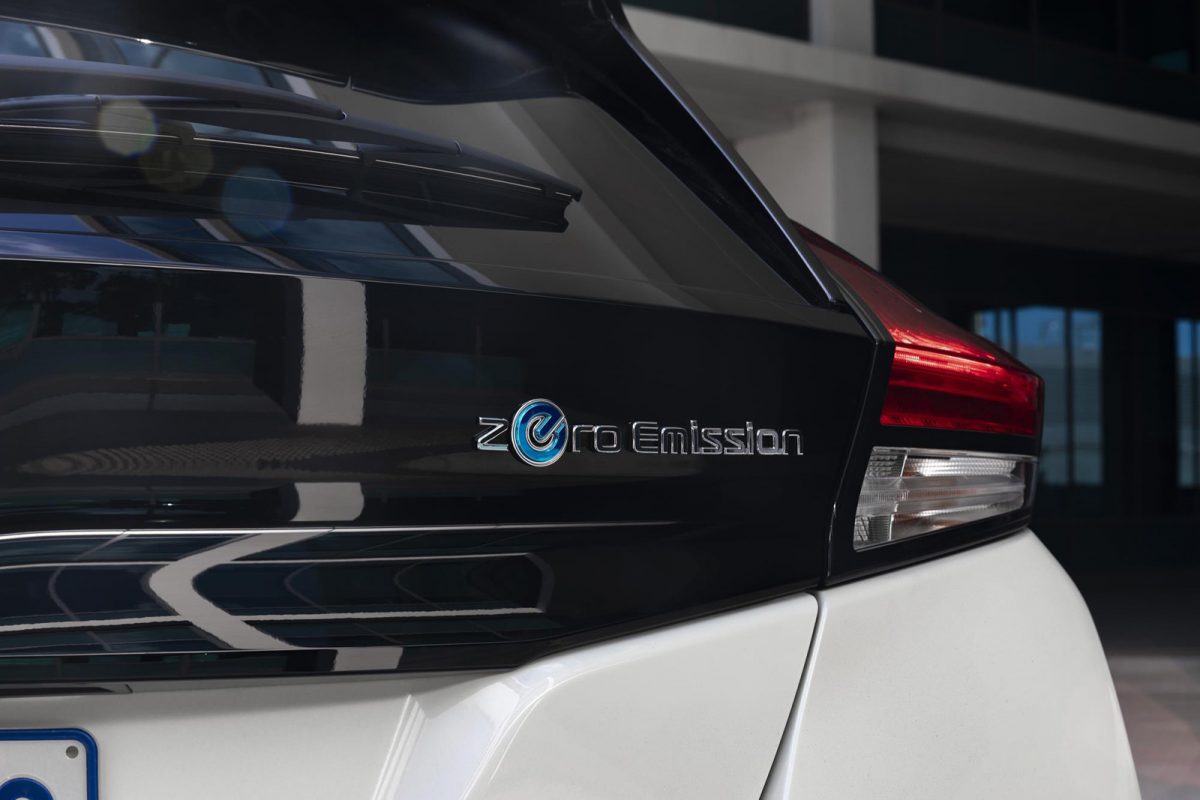Nissan has announced that one third of its Australian volume will include electric technology

Nissan has announced that during the current mid-term plan, one third of its Australian volume will include electric technology. Led by the launch of new Nissan LEAF – which heralds a new era of electrification for the company – Nissan is preparing for the expected spike in electrification and electric vehicle interest and sales. At an electrification thought leadership event in Sydney, Nissan spoke about the new Nissan LEAF and made this important future-orientated announcement.
“Electrified vehicles will represent a third of Nissan volume in Australia during our mid-term plan,” said Nissan Australia managing director, Stephen Lester. “By introducing more electric alternatives on several of our key models, we will make mass market electrification a reality. I have no doubt electric vehicles will be a success here, and sooner than many think, and Nissan is planning for this now to ensure we meet the future needs of the buyer.”
Further to this, Nissan announced that the deliveries of the new generation Nissan LEAF will begin in mid-2019, and that the Australian-spec model will feature e-Pedal, Apple CarPlayTM and Android AutoTM. The new LEAF will also provide an expected real world driving range of up to 270 kilometres per charge (WLTP combined cycle#) thanks, in part, to the larger 40kWh battery. These new features, plus an increase in power and torque, its stylish new design and bi-direction charging capabilities, are some of the key drivers in attracting repeat LEAF buyers and potential new customers to Nissan’s award-winning electric vehicle (EV).

“The new Nissan LEAF has the ability to transform the way we drive and live,” said Lester. “The increase in power and particularly torque make this vehicle a lot of fun to drive, surprising many who get to experience it. A larger 40 kilowatt hour battery will keep the LEAF on the road for longer and with bi-directional charging capabilities, you could feed charge from the car to power your home.”
With range anxiety a major consideration for EV buyers in Australia, internal global research shows that current owners approach the re-charging of their vehicle’s battery in the same way as their mobile phone. “Charging is a simple act and many EV owners tend to charge their vehicle like they charge their mobile phones in preparation for the next day, by doing it overnight,” said Lester. “A study by Zero Carbon Australia tells us that, on average, city-based drivers have a 38 kilometre daily commute, so daily re-charging is not necessary. Also, with a conscious mindset of overnight charging well in place thanks to mobile phones, most Australians are unlikely to have range issues.”

With its fun to drive performance, dynamic new design and a range of Nissan Intelligent Mobility active safety technologies, as well as e-Pedal, the new Nissan LEAF is sure to impress. e-Pedal allows drivers to start, accelerate, decelerate, stop and hold the car by using the accelerator pedal alone – without needing to use the brakes. It also features the Auto Hold function, maintaining the car’s position until acceleration is required. This will enable new Nissan LEAF owners to drive without using the brake pedal for up to 90 per cent of the time.
Nissan is committed to making transportation safer, smarter and more enjoyable, and it is Nissan Intelligent Mobility that will help to achieve this. Nissan Intelligent Mobility encompasses three core areas of innovation: how our cars are powered (Nissan Intelligent Power), how they are driven (Nissan Intelligent Driving) and how they are integrated into society (Nissan Intelligent Integration).
These new technologies are supported by a variety of Nissan Intelligent Mobility active safety equipment such as a 360 degree Intelligent Around-View Monitor with Moving Object Detection, Intelligent Cruise Control, Intelligent Emergency Braking – with Pedestrian Protection, Intelligent Cruise and Trace Control and Intelligent Lane Intervention. New LEAF also features Predictive Forward Collision Warning, Rear Cross Traffic Alert, push-button start, High Beam Assist, Satellite Navigation, ISOFIX anchor points and front and rear parking sensors. Combining these with its contemporary exterior and interior design, an 8-inch touchscreen display, 7-inch Advanced Drive Assist Display, heated steering wheel, leather accented seats and ample space for five, the new LEAF offers a safe, comfortable, quiet drive that will be enjoyed by everyone.

Sold at 89 Nissan Dealerships across the country – up from 12 when the LEAF was introduced in 2012 – Nissan will have the largest EV sales network in Australia, supported by EV installation experts JET Charge. JET Charge is Nissan’s preferred charger installer at Nissan Dealerships, and for customers is able to fit out homes with charging equipment nationally.
“With more and more choice available, Australians are embracing electric vehicles, sales are going to grow, and Nissan is prepared for this growth,” said Lester.“This means that the Dealership has the expertise and infrastructure in place to charge and service a LEAF, is stocked with spare parts and accessories, and they have trained sales staff and service technicians. We also have the relationship with JET Charge who will support LEAF owners with charging infrastructure at their homes. Nissan is a global EV authority and we are leading the way here by giving buyers the best sales and post purchase experience.”
The new Nissan LEAF has an improved 110kW or power – up 38 per cent versus the outgoing model – and 320Nm or torque, an increase of 14 per cent over the first generation, adding a degree of exhilaration for the driver thanks to the instant acceleration.
Charging times*, depending on the charging connection, range between 24 hours to a less than 60 minute fast charge.
#WLTP range for European spec model. NEDC range is 350km.
* Charging times for Australian-spec vehicles will be confirmed when vehicles arrive here. Charging times are dependent in charging conditions, including charger type and its condition, battery temperature, as well as ambient temperatures at point of use.
Credit: Nissan Motor Co., Ltd.
